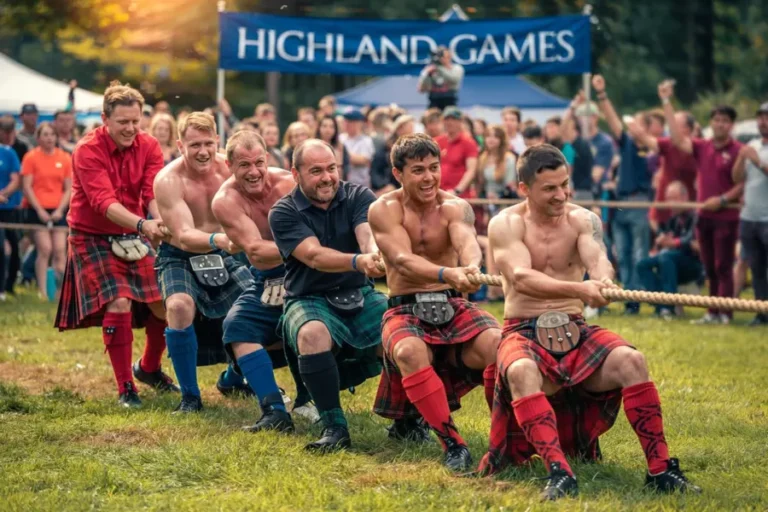Can Non Scottish People Wear Kilts?
The short answer is yes, anyone can wear a kilt.
But… of course, that’s not the whole story.
Because once you start digging into cultural symbols — the kind of clothing that holds meaning, memory, even identity — things get a bit more complicated. Not necessarily in a bad way, but it’s the kind of question that makes people pause. Maybe it should.
And when it comes to kilts, there’s a mix of pride, tradition, even defensiveness, depending on who you ask and how it’s worn.
So let’s talk about it — without rushing to a clean, easy answer.
What a Kilt Represents (And What It Doesn’t Always)
To understand the hesitancy some people might feel, it helps to look at what kilts actually represent — especially in Scotland.
Kilts aren’t just old-fashioned skirts with patterns. For many Scottish people, they’re tied to ancestry. Clan identity. Land. History. In some cases, survival. The kilt was banned after the Jacobite uprisings in the 18th century, seen as a symbol of rebellion. People were arrested for wearing them. So for some, it’s not just fabric — it’s legacy.
That said, not every Scot feels that way. Some see the kilt as mostly ceremonial now — something you wear to a wedding or formal dinner, or, if you’re lucky, the Highland Games. Others see it as a kind of cultural ambassador: the scottish kilt represents Scotland to the world, and seeing others wear it (respectfully) is actually kind of nice.
The key word there, though, is “respectfully.”
Is It Cultural Appropriation to Wear a Kilt?
It’s a fair question. One that often comes up in this context. And honestly? The answer depends on how you define cultural appropriation — and who you’re talking to.
Some will say, no, it’s not appropriation. Kilts aren’t sacred or off-limits. You’re not mocking them. You’re not distorting their meaning for profit or parody. Wearing a kilt as an outsider, especially if you’re doing so to honor the culture or participate in a cultural event, feels more like appreciation than appropriation.
But others might feel a twinge of discomfort seeing someone, say, in a flashy novelty kilt at a party who knows nothing about its origins. Not because it’s offensive per se — just because it feels a little careless. Detached from its roots.
It’s not that non-Scots shouldn’t wear kilts. It’s just… how you wear it matters.
So, Why Would Someone Want to Wear a Kilt Anyway?
Let’s be honest — part of it is the look. Kilts are distinctive. Formal but bold. They carry a certain presence. There’s something ceremonial about wearing one, even if you’re not entirely sure why.
Others wear them for comfort. No waistband. Freedom of movement. And, yes, the breeze — especially in warm weather — is surprisingly effective.
But for many non-Scottish wearers, the interest is more meaningful. Maybe they married into a Scottish family. Maybe they play in a pipe band or do Highland dancing. Or maybe, just maybe, they’ve always felt connected to Scottish culture through books, travel, music — or, okay, maybe it all started with Braveheart. That’s not the most accurate reference, but still, for some people, that was the spark.
Whether it’s curiosity or respect or a little of both, there’s usually a story behind why someone puts one on.
Do You Have to Be Scottish to Wear a Clan Tartan?
Ah, now this one gets touchy.
In theory, some clan tartans are considered private. If you don’t belong to the clan (or aren’t invited by someone who does), tradition suggests you shouldn’t wear it. Sort of like wearing a family crest that isn’t yours — not illegal, not even necessarily rude, just… questionable.
But in practice? Things are looser.
Many tartans are designated as “universal” — Black Watch, for example, is a popular one. Others, like Scottish national tartans, were created specifically so anyone could wear them, regardless of ancestry.
Some clans even welcome outsiders who are interested in their heritage. So if you’re drawn to a particular tartan, the best thing to do is simple: look it up. Read about its history. See if it’s listed as restricted or open. And if you’re still unsure, just ask. Most Scottish heritage societies are happy to help.
Wearing a Kilt The Right Way (And What That Even Means)
There’s no universal rulebook, but there are expectations — especially at formal events.
Wearing a kilt with the full Highland outfit (jacket, sporran, hose, flashes, ghillie brogues) carries a certain etiquette. Kilts are pleated at the back, worn with the front apron flat. The sporran (the pouch) hangs in front — not on the side. And if you’re wearing a belt and waistcoat together? Traditionalists might raise an eyebrow, since those are technically redundant.
But does everyone follow these rules? No. Some mix modern jackets. Some go casual. Some wear kilts with boots and t-shirts — and look pretty great doing it.
Again, it comes back to intention. Are you honoring the look? Are you aware of what it represents? Or are you just throwing it on for a laugh?
That difference — subtle as it may be — is what most people notice.
Moments When It Makes Sense (And When It Doesn’t)
So let’s say you’re not Scottish. Not even a little. But you’ve got a kilt. When do you wear it?
Weddings, particularly if your partner has Scottish roots? Absolutely. Scottish festivals or Highland Games? Of course — it’s encouraged. Formal dinners hosted by Scottish societies? Go for it, just be mindful of the dress code.
St. Patrick’s Day bar crawls? Hmm. Maybe not the best idea — especially if the kilt is neon green and paired with novelty socks. That’s where things veer into parody, and it can feel disrespectful, even if that wasn’t your intent.
One person’s fun can be another’s cringe. And when it comes to heritage clothing, the line is thinner than you might expect.
Final Thoughts (With a Bit of Room for Doubt)
Can non-Scottish people wear kilts? Yes. Of course. Culture isn’t something that has to be genetically inherited to be valued or respected.
But the caveat — and maybe it’s more than a caveat — is how you wear it. Whether you understand where it comes from. Whether you wear it thoughtfully, not just for the visual impact.
It doesn’t have to be perfect. You don’t need to memorize clan history or speak Gaelic. But maybe you pause before you buy the cheapest costume kilt online. Maybe you learn what tartan you’re wearing, or why it was designed the way it was.
Or maybe — and this is okay too — you just like how it feels. How it makes you stand up straighter. How it connects you, however lightly, to a place and history that’s captured your interest.
Wearing a kilt isn’t about proving something. It’s about respecting something. And that’s not reserved for Scottish people — it’s just expected of everyone.











